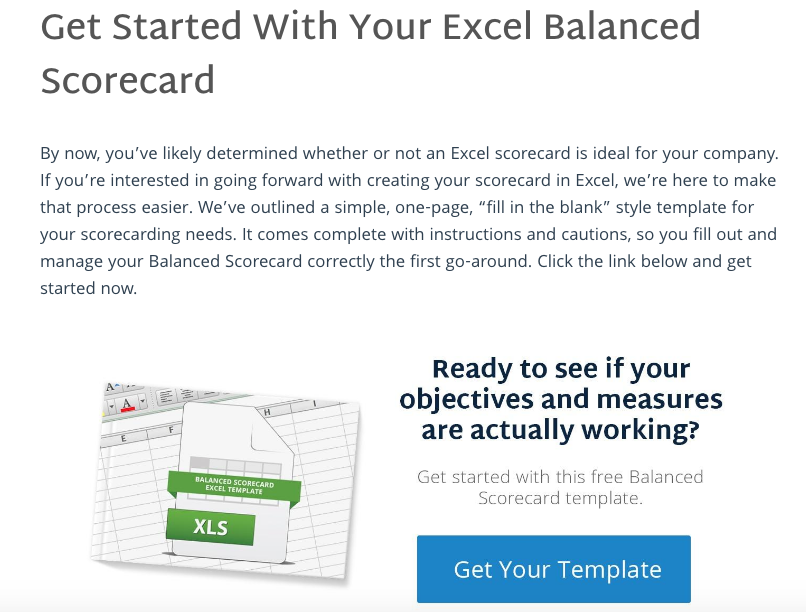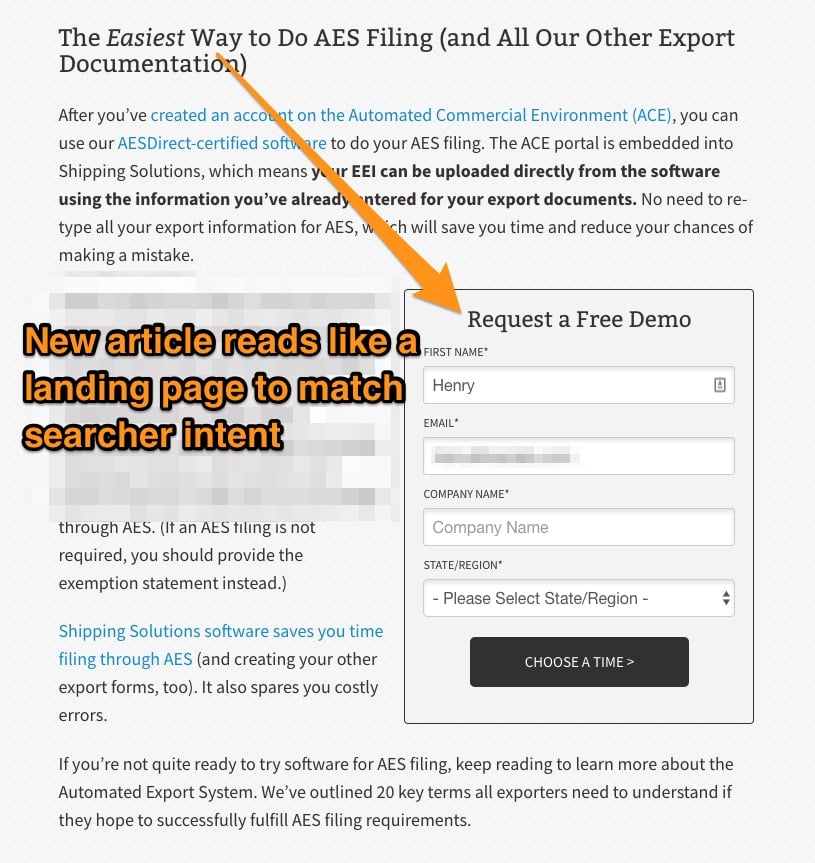The Proven Content Strategy If You Have 25,000+ Organic Visits/Month



Not all businesses should do content marketing the same way. To help give your company some direction, we're publishing a series of articles about different content marketing strategies, and how to know which one to use. This is our third installment in the series.
The three growth content strategies we're covering are based on three levels of visits and Domain Authority:
- Phase 1: Authority Building - Fewer than 1,000 visits per month and a Domain Authority of less than 20.
- Phase 2: Keyword Cultivation - From 1,000–25,000 visits per month and a Domain Authority from 20 to 50.
- Phase 3: Sales Growth - Greater than 25,000 visits per month and a Domain Authority from 50 to 100.
They work—we’ve used them to help our clients and ourselves grow the number of organic visits, leads, and customers.
In this article, we’ll talk about how to grow your visits using content if you currently have more than 25,000 organic visitors per month.
First Things First: Determine Your Visits & Domain Authority
How To Determine Visits
Here’s how to determine your organic visitors a month:
- Find your sessions per month. In your marketing automation platform (like HubSpot) or Google Analytics, check the number of “sessions” for your site.
- Subtract returning customer sessions by removing the people who go to a login page. For example, if you have a software platform with 3,000 visits per month, but 2,800 go to a login page for existing customers, you only really have 200 true visitors per month.
The number you end up with is your number of visits monthly.
How To Determine Domain Authority
Download the MozBar and check your website’s Domain Authority (DA), a number from 0 to 100. The numbers indicate what Google thinks of your website’s authority, from least authoritative to most authoritative. When you buy a domain for the first time ever, your Domain Authority is zero; Twitter, on the other hand, has a score of 99.

You Should Be Reading This Article If
- You have great success getting people to your site organically, meaning you get at least 25,000 organic visitors per month (or in that general ballpark).
- You have a domain authority of 50+. This means you have several blog posts bringing in 1,000+ visits per month, and you’re ranking for competitive topics related to your industry.
- You have aggressive growth goals. You need to grow sales opportunities in the pipeline.
It’s Time For Sales Growth.
Here are five growth content tactics we recommend to keep those numbers increasing:
1. Write about topics that are attracting your most highly qualified leads.
At this stage, you are getting enough visits and leads to go a deeper level into strategies for creating content. Now, it’s less about which topics bring in leads, and more about which topics bring in specific types of leads, sales qualified leads, customers, etc.
For example:
- Post X brings in 1,000 visits, 50 leads—5 of which are sales qualified leads.
- Post Y brings in 1,000 visits, 50 leads, and 12 are sales qualified leads.
- If you can prove over a period of time that Post Y brings in more sales qualified leads than Post X, you will want to write more posts like Y.
How To Do It
You don’t even have to dive into any complicated blog analytics—all you need is a HubSpot list and these two contact properties:
- Lead tier (or any way you measure the quality of a lead like lead score, lead stage, etc.)
- First page seen
There is a very specific method to getting this data, which we outline step-by-step in our article, How To Statistically Prove What Blog Posts Bring In The Best Leads. (Go there if you want all the details of how this process works and why.)

Once your blog analytics are complete, you’ll have a spreadsheet that will paint a clear picture of the percentage of leads by blog post, and then, more importantly, the breakdown of leads by Tier. After reviewing the data you’ll likely notice some trends:
For example, one of your blog posts intended for top-of-funnel contacts may be bringing in highly qualified (Tier A) leads. If this is the case, you’ll want to write more about that particular topic, since it’s clearly attracting the type of leads you want.
Conversely, if a blog article intended for bottom-of-funnel leads attracts Tier C leads who aren’t taking any steps toward becoming an MQL, you’ll likely want to stop writing about it, since this topic isn’t bringing in the people you want.
While pushing large numbers of contacts to your site via your blog is a great strategy, it really doesn’t mean a whole lot if you aren’t attracting the right people. But this analysis allows you to hone in on which blog topics are bringing in (or have the most potential to bring in) those Tier A leads.
2. Monitor the conversion rates on posts and pages to make sure they have the most appropriate CTAs.
If you’re getting thousands of visitors but not a lot of leads (less than 1%, for example), you may not have the right CTA. This tactic will help you see if that’s happening on your pages.
For example, this post gets a phenomenal amount of traffic—roughly 30,000 views every month.

When the article above was originally published, it only had one call-to-action (CTA) at the end of the article. As the traffic began to grow rapidly, we revisited our strategy and added relevant links as CTAs throughout the article. For example, in the image above, you can see that the three people-related metrics are followed by a link to “Download the full list” of 53 HR KPIs and measures.
This action nearly doubled the number of visitors who became leads, taking the conversion rate from 1.5% to 2.5%.
With 30,000 visits per month, that means we continue to add an additional 300 new leads to ClearPoint’s database each month—and we were able to do this just by revisiting CTA placement within the article.
How To Do It
Here’s something you can do today to capitalize on this method:
- Look at your high-traffic articles.
- Examine the conversion rate for each post. For the most-visited yet lowest converting articles, find opportunities to test out new CTAs to see if they’ll bring in more leads.
- Switch in new CTAs at the bottom of the post.
- Try out H3 CTAs.
- Add more value to the article by linking to offers throughout the article text (as shown in the example above).
- Track the conversion rate over time (before and after making CTA changes); you will likely be pleasantly surprised with the results!
3. Write offers that fit the keywords you’re currently ranking for.
When potential customers are visiting your website but leave without converting, examine your current offers to make sure you have a natural way for them to convert.
To create an avenue for ClearPoint’s interested audience to become potential customers, we created KPI libraries for every department of a business. These libraries served as a targeted offer appropriate for the client’s high-performing blog posts that didn’t otherwise have an offer matching the content.

How To Do It
- If your site is ranking for topics, for example, that interest sales managers but you aren’t getting many leads from these topics, readers are probably coming to your site and not finding a way to convert. Do you have a sales manager-specific offer that would appeal to them—answering questions, providing “insider tips,” addressing challenges, or giving them a useful template? If not, create one!
- For any post or page that gets thousands of views and ranks highly, brainstorm ways you can create offers (eBooks, guides, templates, scripts, “how to” manuals, etc.) that would pair well.
4. Create blog posts specifically for your existing offers.
Your LPs are most likely only a couple hundred words at most, but they’re probably not ranking in Google. For any offers you’ve already created, use the keywords within the offers and create introductory articles to those offers using those keywords.
Roughly 1,500 people visit this article each month, which was written specifically as an introduction to the offer in the CTA. It describes how to create a Balanced Scorecard (a strategic framework) in Excel—and then offers a free template to create a Balanced Scorecard in Excel. It doesn’t get much more closely matched than that!

One out of every four clicks on the CTA, and one in every 10 becomes a lead. A 10 percent conversion rate is absolutely huge. (Really, even if you’re looking at a 3 percent conversion rate, you’re crushing it.)
How To Do It
Write introductory posts for any new offers you create, as well as any existing offers that don’t already have an introductory post. Be sure not to divulge everything your offer discusses; you want to create interest in downloading the offer, not give the whole thing away!
5. Rewrite articles to include a bottom-of-funnel landing page.
At this stage, you need to be getting sales opportunities directly from your content, not just visits/leads—and that’s where this tactic comes in. The strategy here is to identify where bottom-of-funnel keywords are ranking with top-of-funnel content. (Bottom-of-funnel means anything within a search phrase that indicates the searcher is looking for a solution, not a resource—solutions usually include words like software, tool, company, platform, product, solution.) Then rework the existing article to better match the bottom-of-funnel content. Here’s an example:

This Shipping Solutions article, originally titled “20 Terms You Need to Know When Filing through AES,” ranked #1 in Google for the term “AES filing.” It had zero free trial requests out of 22,000 all-time page views.
We rewrote it as “AES Filing Software by Shipping Solutions (Plus 20 Key Terms),” where it’s currently ranking second in Google for the term "AES filing,” and has three free trial requests out of 2,000 page views.
These are small, incremental wins (in this example, about one new bottom of funnel request per month)—but if we can do this easily and quickly for multiple keywords, we're moving our sales opportunities in a big way.
How To Do It
- If you have articles that are ranking already, you probably wrote them as resources. If you’re already ranking for a bottom-of-funnel keyword, then consider adding a bottom-of-funnel landing page at the top of the article. This addition keeps the existing content that’s ranking, but provides a call-to-action that better matches what the persona is searching.
- One caveat: You can expect a slight decrease in visits to pages where you’ve employed this inbound marketing technique, but you should find that you’ve increased your bottom-of-funnel leads.
6. Write a pillar page to build authority.
Pillar pages are very long articles (around 4,000 words) that target bigger keywords in your industry. Pillar pages give you an opportunity to rank for competitive keywords you would not be able to rank for in normal-length or long-form blog posts.
As you may have read about previously, pillar pages are a great way to grow your visits, but for companies that already have 25,000+ organic visits per month, they are also great for two reasons:
- They help you keep making progress with topics you already have authority on.
- They provide support for expanding into new topics. Once you’ve written a reservoir, you can continue to improve your ranking by writing supporting guest posts and regular posts linking within them to the reservoir post.
Here’s one example of a successful Pillar Page from our clients:

In Conclusion
At 25,000+ organic visits per month, your content marketing clearly rocks—by focusing on these tactics that increase conversions, you can get more of those visitors to turn into leads and sales opportunities, which should be your goal.
You can do this on your own, but if you’d rather partner with a team of experts who can help you optimize your company’s content marketing strategy, talk to us. We’ll have an honest conversation about how to get meaningful business results for your company using growth content.

